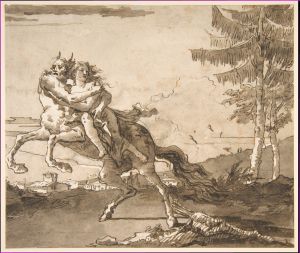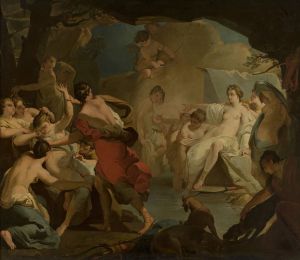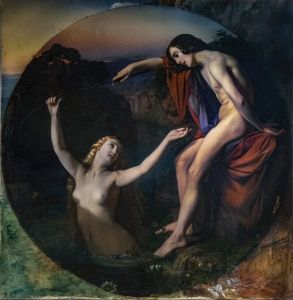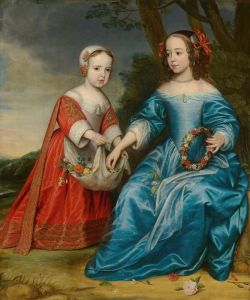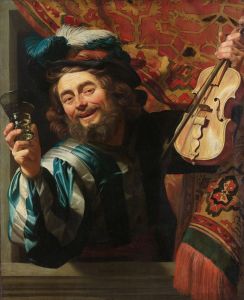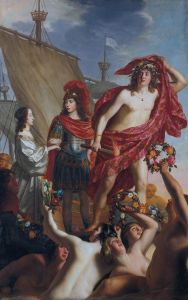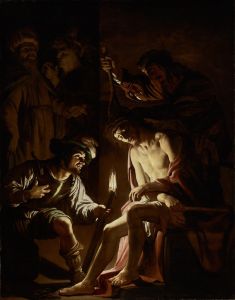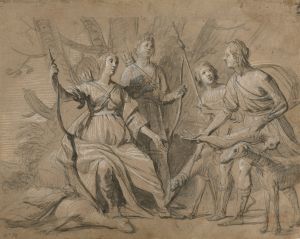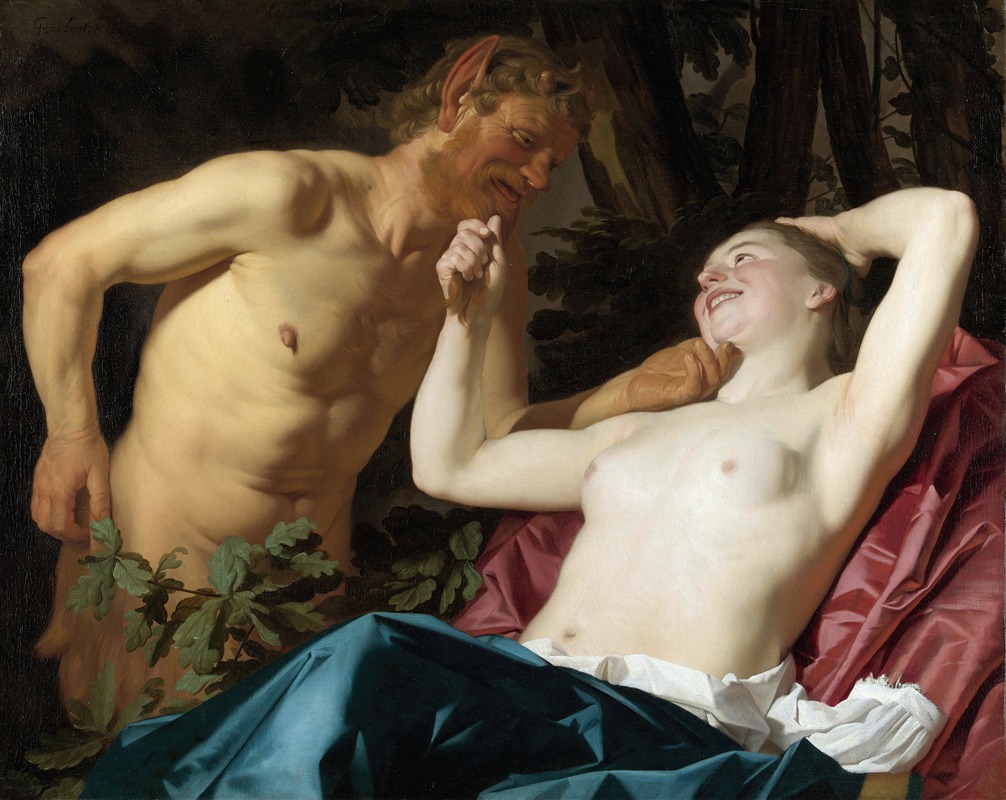
Satyr and Nymph
A hand-painted replica of Gerard van Honthorst’s masterpiece Satyr and Nymph, meticulously crafted by professional artists to capture the true essence of the original. Each piece is created with museum-quality canvas and rare mineral pigments, carefully painted by experienced artists with delicate brushstrokes and rich, layered colors to perfectly recreate the texture of the original artwork. Unlike machine-printed reproductions, this hand-painted version brings the painting to life, infused with the artist’s emotions and skill in every stroke. Whether for personal collection or home decoration, it instantly elevates the artistic atmosphere of any space.
Gerard van Honthorst's "Satyr and Nymph" is a painting attributed to the Dutch Golden Age artist Gerard van Honthorst (1592–1656). Known for his mastery of chiaroscuro and his influence by the Italian Baroque style, Honthorst was a prominent figure in 17th-century Dutch art. He earned the nickname "Gherardo delle Notti" ("Gerard of the Nights") for his skillful use of dramatic lighting effects, often depicting scenes illuminated by candlelight or other artificial sources.
"Satyr and Nymph" is an example of Honthorst's ability to combine mythological themes with a sense of theatricality and sensuality. The painting portrays a satyr, a creature from Greek mythology associated with revelry and nature, interacting with a nymph, a mythological female figure often linked to natural elements such as forests or water. The scene is imbued with a sense of intimacy and playfulness, characteristic of Honthorst's approach to such subjects.
The composition of the painting reflects Honthorst's training and experience in Italy, where he was influenced by the works of Caravaggio and his followers. The use of strong contrasts between light and shadow, as well as the lifelike rendering of the figures, demonstrates Honthorst's technical skill and his ability to evoke a sense of immediacy and presence. The figures are often depicted in close proximity to the viewer, enhancing the sense of engagement with the scene.
While the exact date of the painting's creation is not definitively known, it is generally placed within the period of Honthorst's mature career, after his return to the Netherlands from Italy in 1620. During this time, Honthorst became a sought-after artist, producing works for both Dutch and international patrons, including members of European royalty.
The painting is notable for its depiction of mythological subjects, which were popular among patrons of the time. Such works often served as allegories or moral lessons, though they also provided an opportunity for artists to explore themes of beauty, desire, and the human connection to nature.
As of now, the specific details regarding the current location or ownership of "Satyr and Nymph" are not widely documented. However, Honthorst's works can be found in major museums and collections around the world, reflecting his enduring reputation as one of the leading painters of the Dutch Golden Age.







